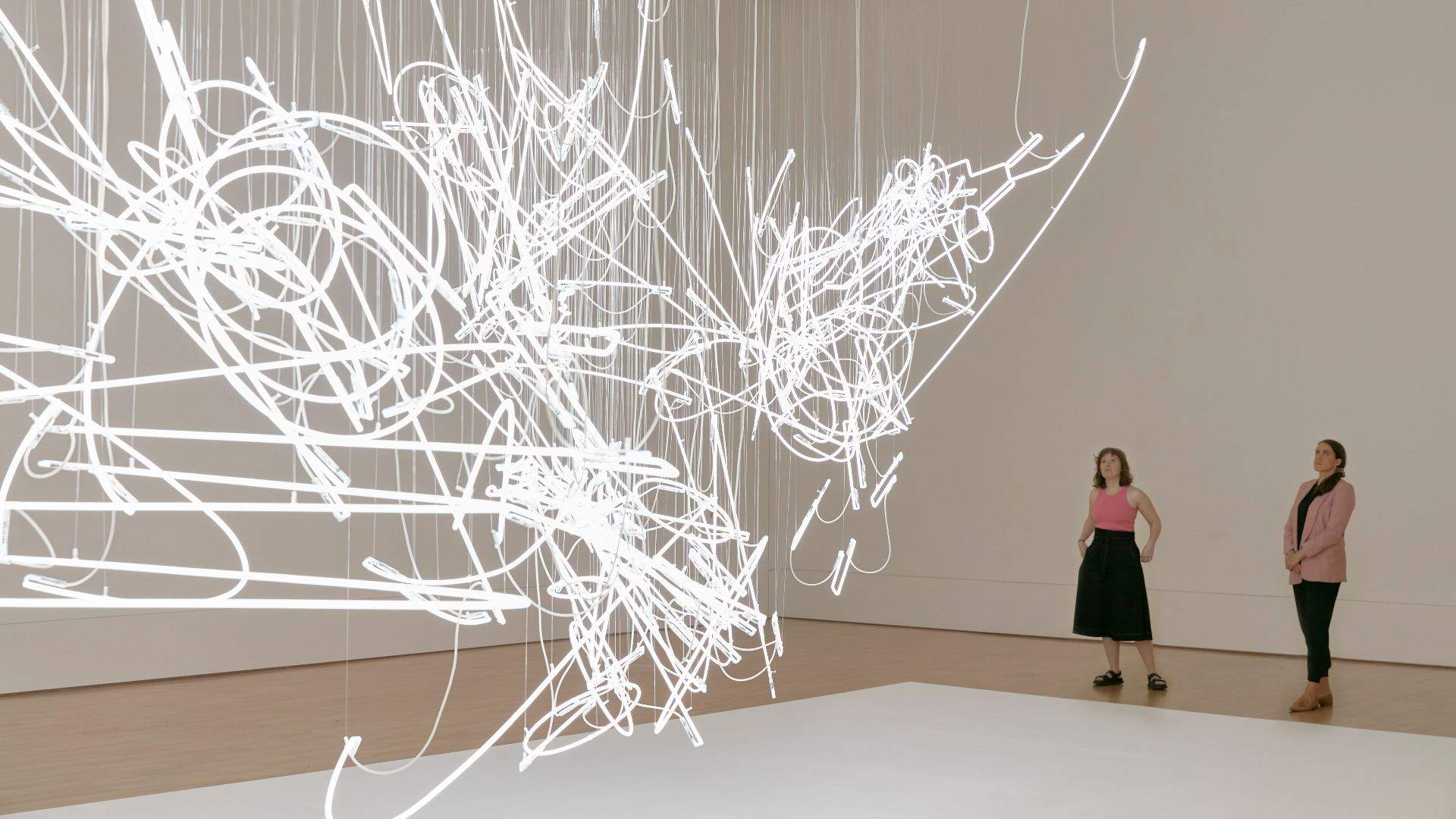Five Artworks to Look Out for at the Blockbuster 2020 NGV Triennial
The massive gallery-wide exhibition includes marine monsters, giant neon drawings and a dazzling disco ball made from trash.
The National Gallery of Victoria is wrapping up this wild year in style, hosting the blockbuster second edition of its much-hyped NGV Triennial. Taking over the gallery from Saturday, December 19, the exhibition looks set to be the biggest art event to hit the city in three years, featuring works from over 100 artists, representing 30 different countries. Among them, you can expect a diverse response to this year's themes of illumination, reflection, conservation and speculation.
With a lineup like this — and many months of missed art appreciation to make up for — it's hard to know where to even start. But we're here to help. We've delved into the program and pulled out five must-see artworks set to grace the gallery's hallowed spaces this summer. Start plotting your post-lockdown art gallery debut now, with this roundup of five captivating artworks to check out at the NGV Triennial.

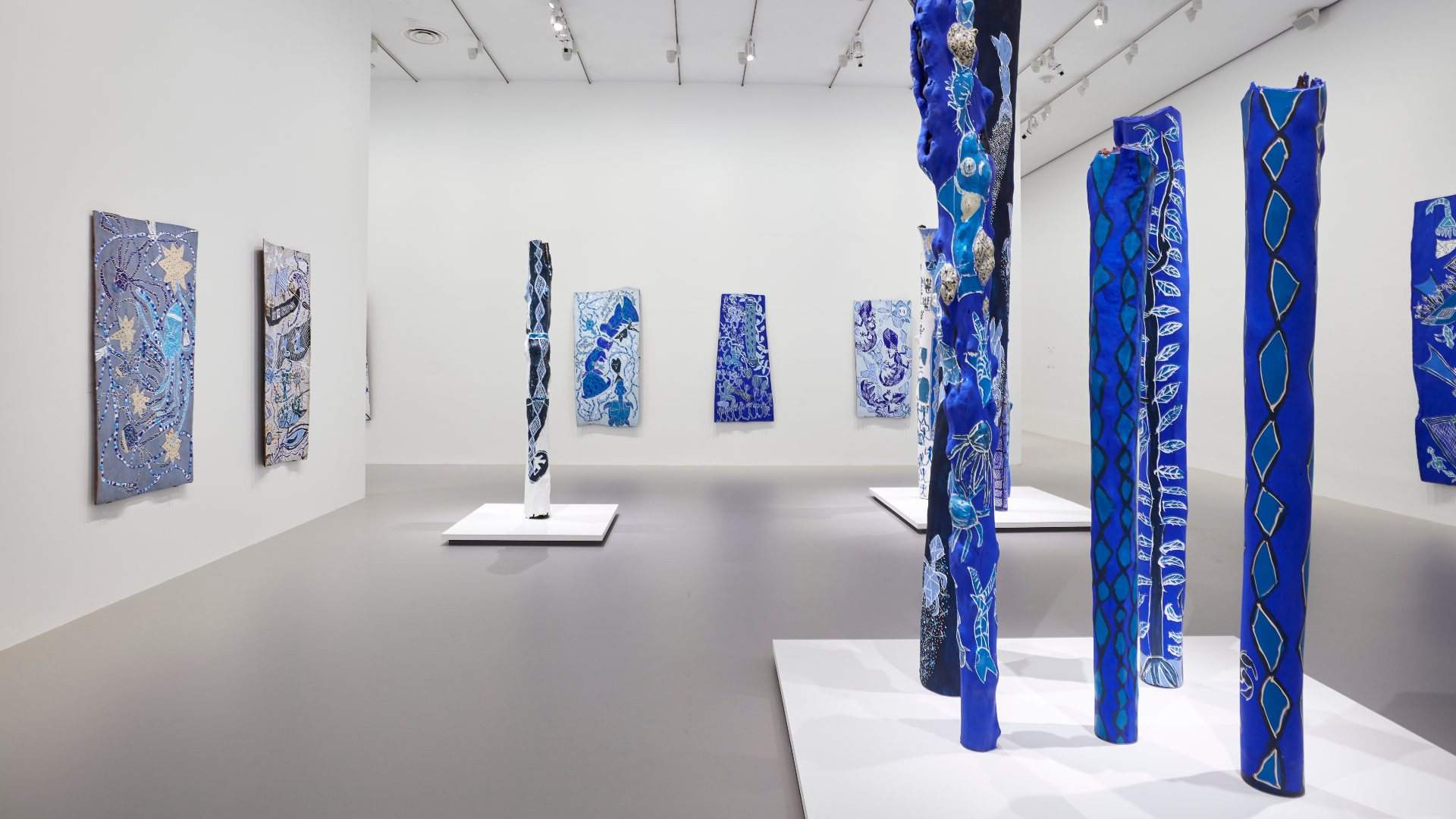
Dhambit Mununggurr, 'Can we all have a happy life' 2019-20, courtesy Salon Indigenous Art Project. Installation view at NGV International, photographed by Sean Fennessy.
DHAMBIT MUNUNGURR: CAN WE ALL HAVE A HAPPY LIFE
If you've got a thing for hues of blue, this immersive work from Yolnu artist Dhambit Munungurr will surely resonate. While artists from her home of Yirrkala (Northeast Arnhem Land) traditionally paint using hand-ground ochres and other natural pigments, Munungurr was granted special permission to switch to acrylic paints after a 2005 car accident left her with ongoing injuries. She's since developed a special love for the colour blue and as such, her recent works have left a significant mark on Yolnu art as a whole. This NGV installation Can we all have a happy life (2019–2020) is the latest to embrace the artist's go-to colour palette, featuring a vibrant series of 15 bark paintings and nine larrakitj (hollow poles).

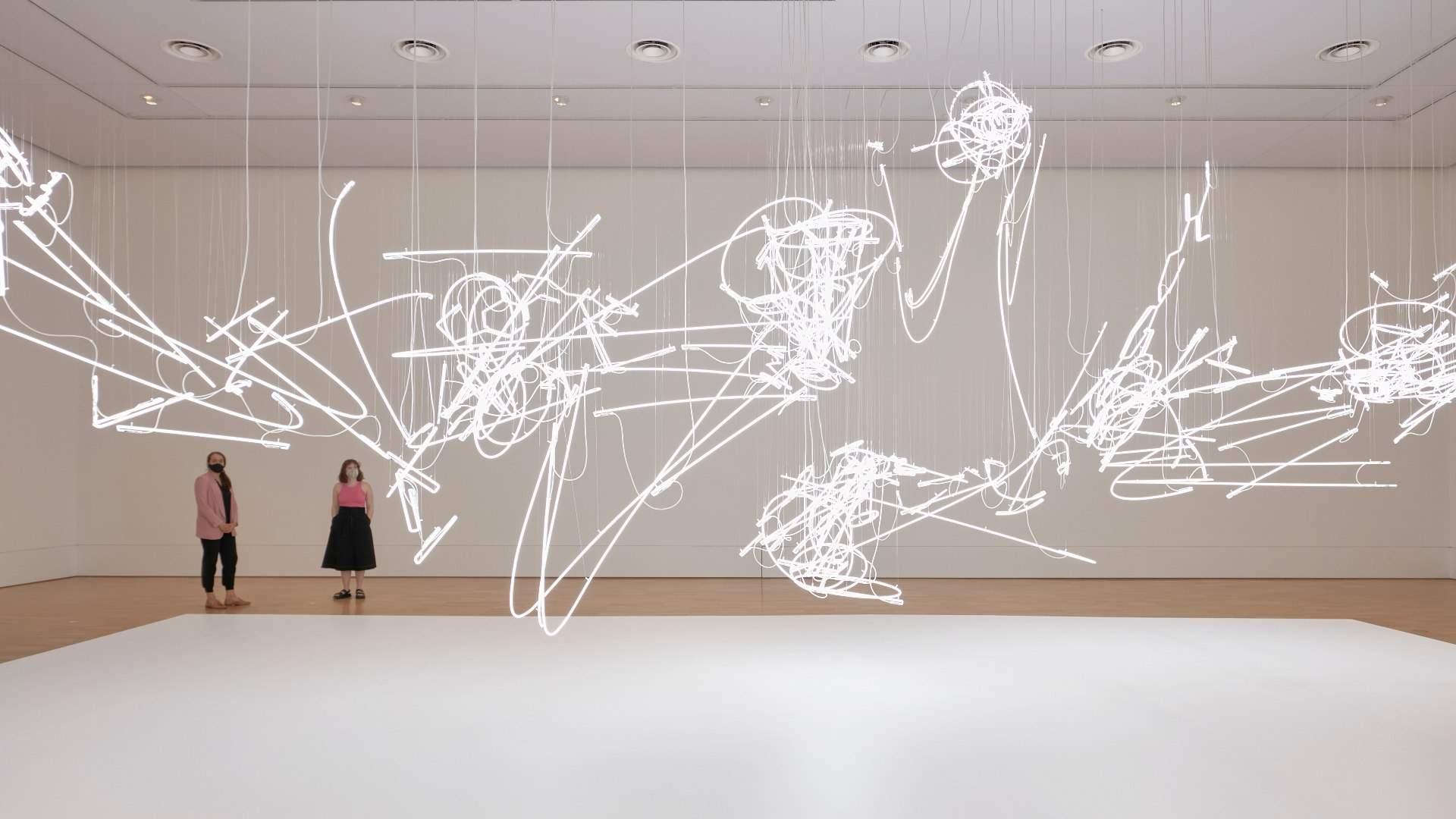
Cerith Wyn Evans, 'C=O=D=A' 2019–20, courtesy White Cube, London. Installation view at NGV International, photographed by Tom Ross.
CERITH WYN EVANS: C=O=D=A
Big and bold is the name of the game for Cerith Wyn Evans' latest work, titled C=O=D=A (2019–20). The London-based artist has created a large-scale, neck-tilting celebration of light and movement, with his series of neon 'drawings' suspended brightly together in mid-air. Among them, you'll spy frantic scribbles, carefully structured shapes and even doodles referencing chemical compounds, each design experienced in countless new ways from different angles as audiences move around the installation. The full display towers at up to six metres high, challenging viewers to continually switch their perspective as they explore how each shape interacts with the next.

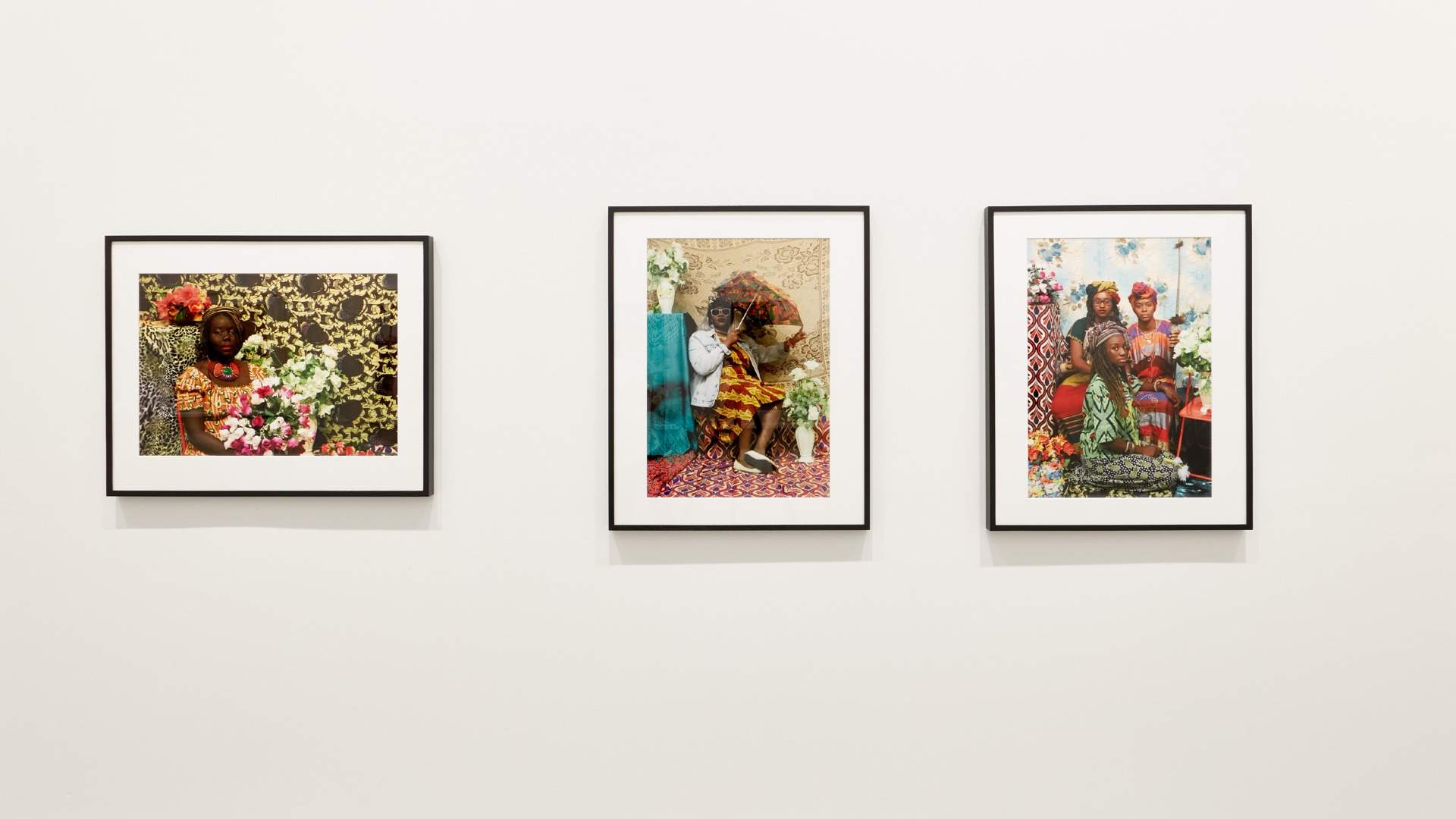
Atong Atem, 'Studio series' 2015, courtesy MARS Gallery, Melbourne. Installation view at NGV International, photographed by Tom Ross.
ATONG ATEM
Atong Atem serves up some fresh cultural perspectives with her series of early photography works offering a vibrant exploration of identity. Born in Ethiopia in the 90s and now based in Melbourne, the artist has developed her body of work honing in on migrant stories and post-colonial practices in the African diaspora. For this portrait project she gives a nod to the old-school studio photography practices of her homeland, via a collection of staged shots dripping with colour. The vintage-inspired images are heady and impactful, featuring a festival of patterns and hues delivered through props, backgrounds, textiles and garments.

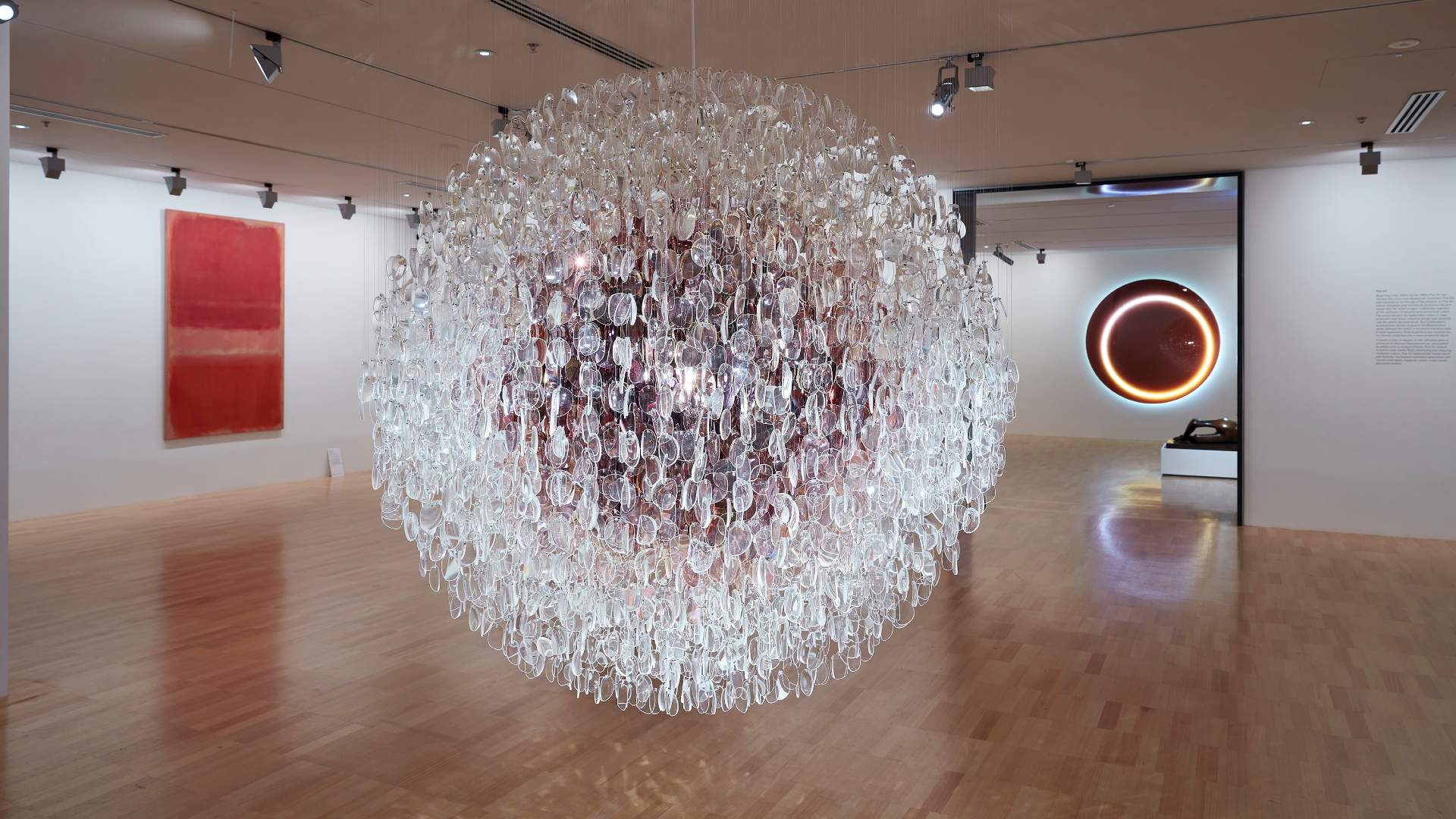
Stuart Haygarth, 'Optical (tinted)' 2009 (foreground), Mark Rothko, 'Untitled (Red)' 1956 (left) and Sabine Marcelis 'Dawn XXXIII' designed 2015. Installation view at NGV International, photographed by Sean Fennessy.
STUART HAYGARTH: OPTICAL (TINTED)
A collection of over 4500 recycled tinted prescription spectacle lenses are the unlikely heroes of this stunning piece by British artist Stuart Haygarth. Optical (tinted) (2009) speaks to ideas of consumption, time and loss, as a thing of beauty is hatched from a bunch of discarded objects. Best known for his work repurposing everyday items into unexpected lighting installations, Haygarth here puts together a layered, shimmering sphere of used lenses. The intricate work features a careful assembly of elements, with cloudier lenses at the core making way for clearer glass pieces towards the outer edges. It's then lit from within, creating a sort of dazzling disco ball that'll have you reassessing your thoughts about waste and trash.

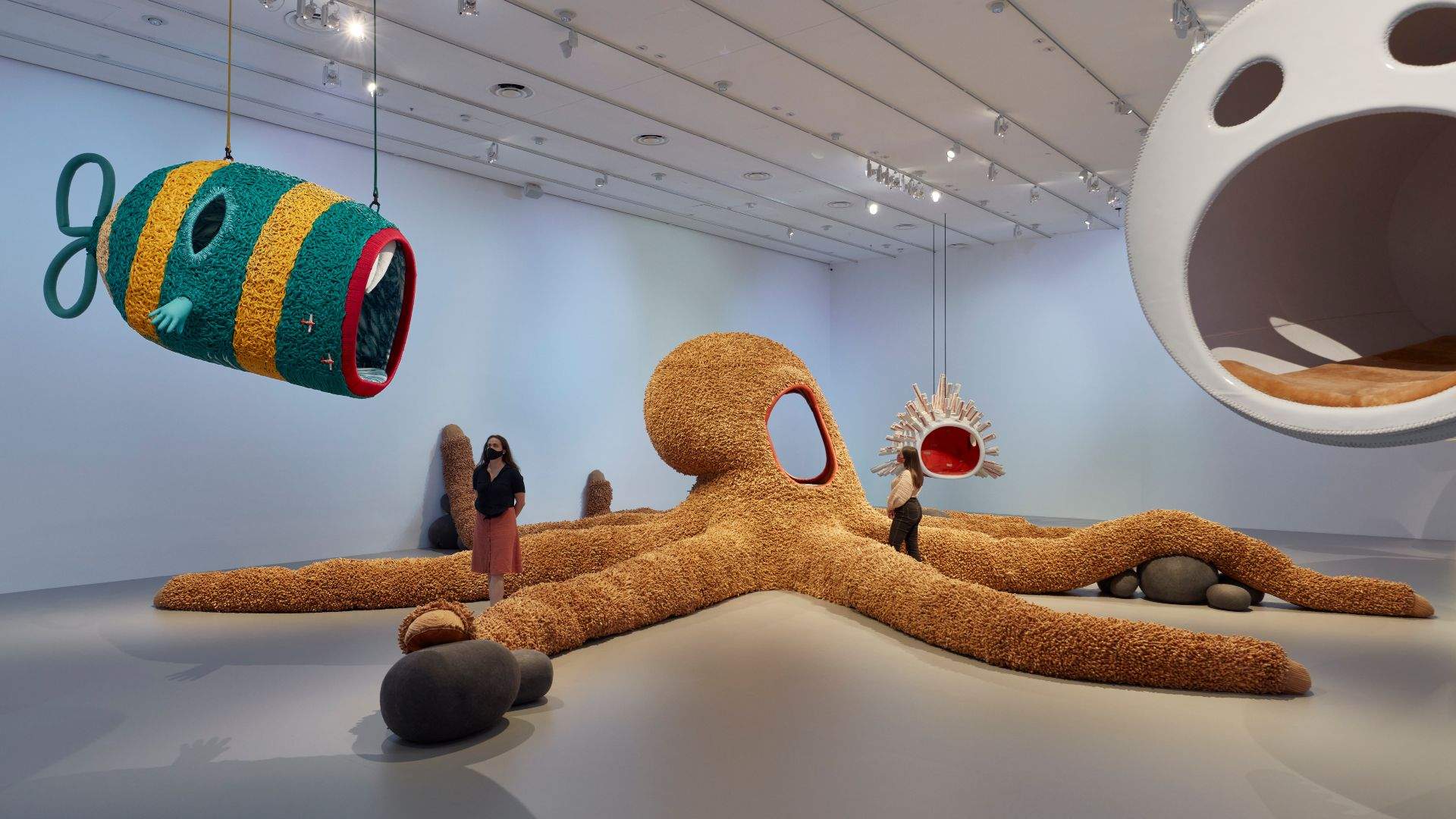
Porky Hefer, 'Plastocene – Marine Mutants from a disposable world' 2020, courtesy Southern Guild, Cape Town. Installation view at NGV International, photographed by Tom Ross.
PORKY HEFER: PLASTOCENE — MARINE MUTANTS FROM A DISPOSABLE WORLD
We'd imagine there won't be too many times in your life you'll get to admire a giant octopus crafted from hand-felted cigarette butts. But this supersized oceanic beauty will be just one of many featured in a new large-scale installation by Porky Hefer. Plastocene – Marine Mutants from a disposable world (2020) sees the South African artist and his collaborators create a series of handmade sea creatures plucked from some dystopian future. The work's built on the notion of species being able to transmutate, eventually adapting themselves to fit a world of polluted oceans and plastic waste.

The NGV Triennial 2020 will be on show at NGV International from Saturday, December 19 until Sunday, April 18, 2021. For more info and to see the full program, visit the NGV website.
Top image: Cerith Wyn Evans, 'C=O=D=A' 2019–20, courtesy White Cube, London. Installation view at NGV International, photographed by Tom Ross
